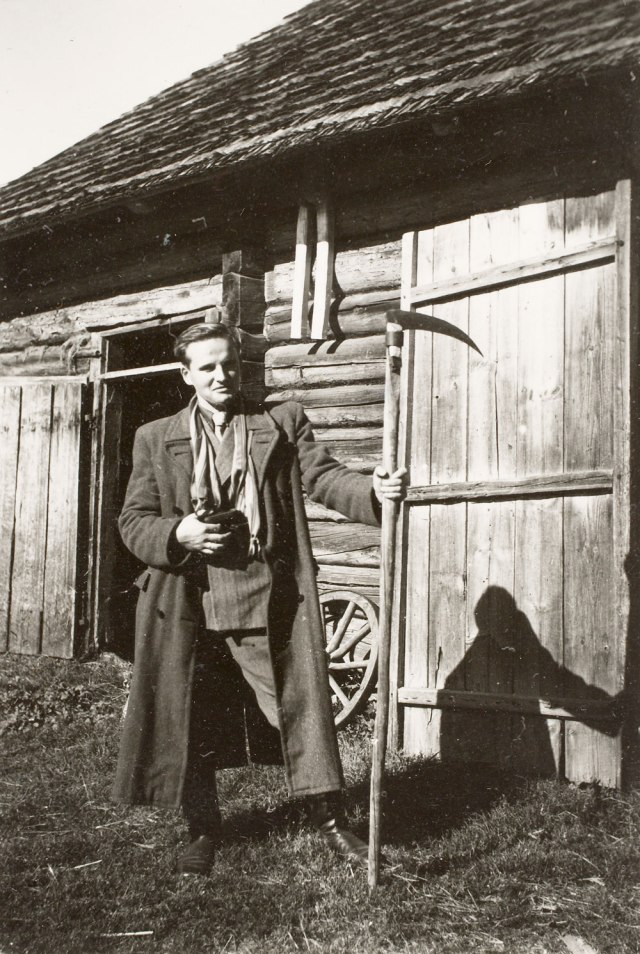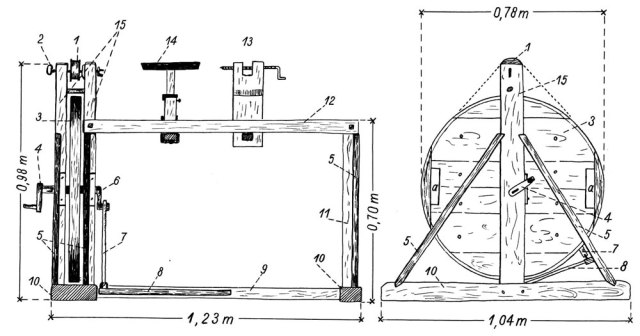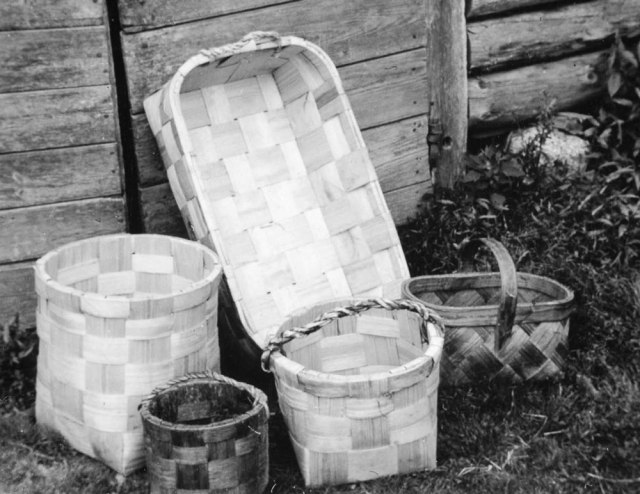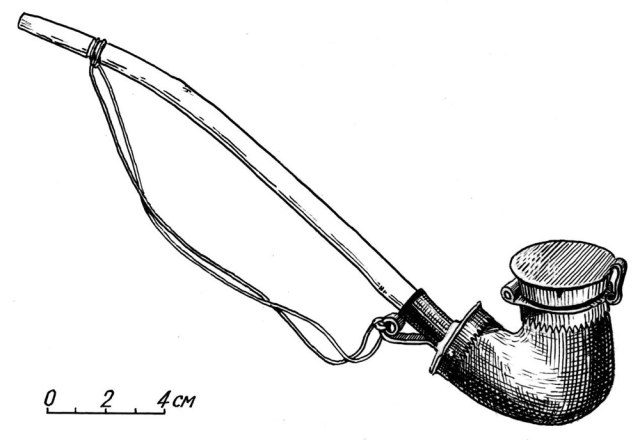Publisher’s note: Ever since being charmed by “Woodworking in Estonia,” I’ve been curious about how and why it was first translated into English in 1969. Fellow woodworkers have shared strange theories about the translation with me that involve the U.S. State Department, the Israeli government and covert Cold War cash. After my years as a journalist, I suspected the story was more mundane, so I asked researcher Suzanne Ellison to dig into the public records available about the book and interview surviving members of the author’s family in Estonia. This is part one of her report.
— Christopher Schwarz, publisher, Lost Art Press

In 1960 a monograph on woodworking is published in the Estonian Soviet Socialist Republic. Within months the book is listed in U.S. government publications. Several years later the book is being translated in Israel and is listed in a CIA publication. Shades of John le Carré? “Tinker Tailor Soldier Ethnographer?”
During World War II, tremendous advances were made in science and technology. Long-range rockets, guided missiles and atomic weapons were developed, resulting in an arms race after the war. Western governments and the Soviet Union vied to increase their spheres of influence. For the post-war civilian population, such scientific advances were a cause of fear and anxiety. An American child attending school in the 1950s and into the early 1960s will remember the air raid drills. They were taught to “duck and cover” under desks or were crowded into school basements with shelves of canned goods lining the walls. Before being stationed at military bases in Western Europe, the children of members of the U.S. Armed Forces were issued dog tags in case of separation from the family.
The Great Information Race One of the United States’ concerns was the perceived gap in science and engineering education and research compared to that of the Soviet Union. A greater need for science education and funding led to the creation of the National Science Foundation (NSF) in 1950. One of the first initiatives undertaken by the NSF was to create a directory of U.S. scientists, their education, fields of research, location and expertise in foreign languages. Comparisons were made to the known numbers and fields of expertise of scientists in the Soviet Union. The U.S. directory of who was where and what they were doing would also be useful in the event of “mobilization” (i.e. war). In a March 1956 report of the Joint Committee on Atomic Energy to the U.S. Senate, the situation was characterized as “in desperate danger of falling behind the Soviet world in a critical field of competition – the life-and-death field of competition in the education and training of adequate numbers of scientists, engineers and technicians.” Another problem was how to keep track of the massive amounts of domestic and foreign scientific and technological literature being generated and how to guarantee easy access to it.

Then, in October 1957, the Soviets launched Sputnik I, creating a space race and deepening the arms race. The capability to put a satellite in orbit also meant an intercontinental nuclear weapon was a possibility. The push to improve science education and expand research became more intense. The National Defense Education Act was passed, and the NSF saw its funding tripled. Improved access to scientific literature, both domestic and foreign, became urgent. In the preface to a report by the Quartermaster Research & Engineering Command (January 1959, revised March 1960) it was noted, “It is realized now that if the United States had translated available information from Russian publications there would have been no surprise at the first Sputnik launching. Information on Soviet earth satellite plans had been published a year before the launching in October 1957.”
Since World War II the Library of Congress had been collecting Soviet publications to translate them, and similar efforts were underway in other government agencies, universities and private industry. The NSF was tasked with increasing the collection of foreign language scientific literature and improving the communication of the available literature. The NSF Annual Report for Fiscal Year 1957 put it this way: “All the foreign scientific publications which a United States scientist may need should be readily available to him…regardless of the language or nation in which the publication first appeared….The availability of translated, as well as the foreign publications not translated, should be called to the attention of scientists through publication of English abstracts, a translation collection, announcements….”

The need for access to, and exchange of, scientific literature from the countries behind the Iron Curtain went beyond the arms race. In any scientific or technological field of research it is vital to know about related research, controls used, reproduction of results and both failures and successes. Exchanging research and advances in medicine and knowledge gained in the sciences was of great benefit for all participants. And if one happened to come across a clue to a new satellite launch, that certainly didn’t hurt.
Ants Viires & His Research Ants Viires was born in Tartu, Estonia, in December 1918. In 1937 he was admitted to the University of Tartu with a focus on language studies. Within three years Estonia was caught in a brutal back-and-forth between the Soviets and Nazi Germany. The Soviets took over in 1944, and Estonia was made a Soviet Socialist Republic and would remain so until 1991.
In the 1940s Viires shifted his studies to ethnography and began to work at the Estonian National Museum; he graduated from the University of Tartu in 1945. At the same time institutions in Estonia were being brought in line to espouse Soviet ideology. Museums and universities became State, as opposed to National, institutions. Researchers were tasked with relating Estonian heritage and culture to that of Russia. Estonian researchers fled to other countries and some were purged by the Soviets. Those remaining in the country were required to be “retrained.” The Soviets labeled the Estonia National Museum a “nest of bourgeois nationalists.”
Viires left the museum in 1946 to pursue post-graduate studies. From 1949 to 1956 he did not work in his field of expertise because his compulsory work for the German military during World War II was used against him. He worked in a clerical position in a factory in Elva and later as an English and German teacher in a small school in Saku. In his free time Viires continued his ethnography studies and wrote his doctoral thesis. He earned his Ph.D. in 1955 and his thesis is what we now know as the (unauthorized) 1969 edition of “Woodworking in Estonia.”

In 1956, as a result of the “Khrushchev Thaw,” the Soviet Union loosened control of scientific and technological publications, easing the flow of information to the West. As a result, three things happened: the Library of Congress increased its exchange agreements with Soviet libraries, Soviet scientific journals could be readily obtained by subscription, and U.S.-based dealers could order books through the state book export monopoly Mezhdunarodnaha Kniga. To keep up with the tremendous number of Russian-language journals, the NSF gave grants to domestic translation and abstracting services. Materials translated by Western European groups were also available.
Viires was able to work again in his field of expertise when he joined the Tallinn Institute of History in 1956. In the July 1957 issue of “East European Accessions List” of the Library of Congress, a journal article by Viires is listed for the first time. Another journal article is listed in the accessions list in 1958.
— Suzanne Ellison
Coming in Part 2: How “Woodworking in Estonia” was part of a program translating documents in exchange for food. You can pre-order this book in our store for $29.